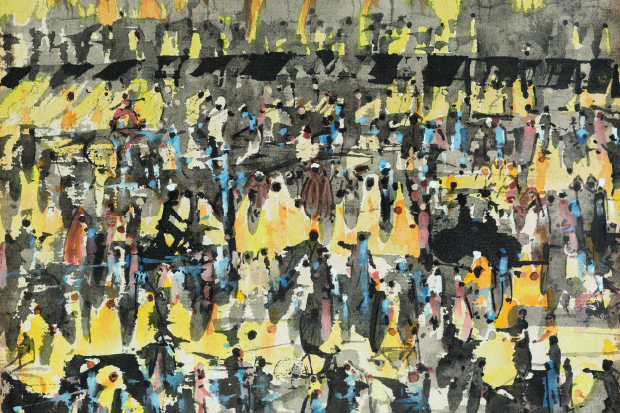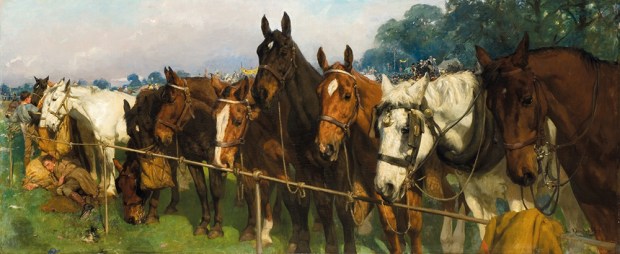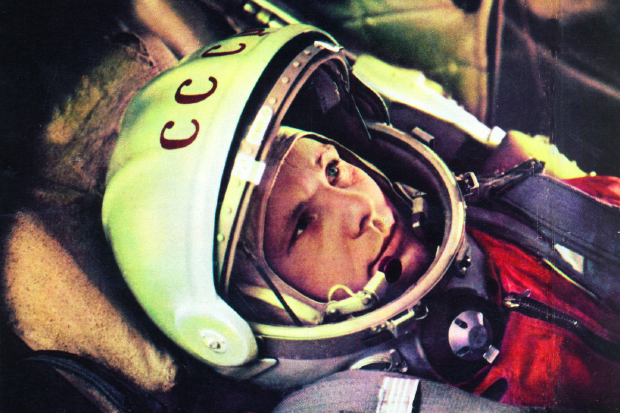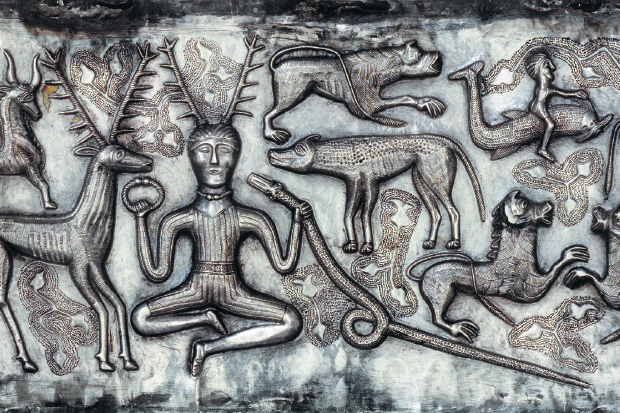Among my more bohemian friends in 1980s London, Brion Gysin was a name spoken with a certain awe. He was the man who William Burroughs, the author of Junky and Naked Lunch, said was ‘the only man I ever respected’. Gysin was a modernist novelist, inventor and artist. He and his mathematician friend Ian Sommerville invented something called the Dream Machine, which was a spinning cylinder said to induce drug-free hallucinations.
He came up with the idea of literary cut-ups, arguing that writing was 50 years behind art in its innovations and this was the writing equivalent of collage. The idea, of introducing random elements by literally cutting up and reassembling either new or found texts, was, for better or worse, taken up with gusto by the likes of Burroughs and David Bowie.
Gysin was also the man who introduced Brian Jones of the Rolling Stones to the music of the Jajoukas in the Rif mountains of Morocco. I became rather fascinated by the trance strangeness of this music (which ended up being the first release on the Rolling Stones record label). On a trip to Paris in 1984, I called Gysin, whose phone number I had extracted from the writer Heathcote Williams. He was, miraculously, not only in, but suggested I might like to come and stay at his flat opposite the Pompidou Centre.
I asked him about taking Jones to meet the Jajoukas. Gysin said that he had the platonic idea that somewhere in the world was an individual’s perfect music, and that this was his. Their music proved that the great god Pan was not dead, after all. After he had first heard the Jajoukas, he told them he would love to hear their music every night for the rest of his life. Their response was, ‘Open a restaurant in Tangier and we will be the house band.’
For several years Gysin was the proprietor of the 1001 Nights restaurant in Tangier, until, he says, a spell was put on the place and it burnt down. As for Brian Jones, he was ‘a typical spoiled rock star’. But when the Jajoukas sacrificed a goat at the end of one of their performances, Jones went pale and muttered, ‘That’s me — the scapegoat.’ Two weeks later he was found drowned in a swimming pool.
Gysin was born in Canada, and went to Downside public school in England, but early on he was very well connected in the art world. In 1935, at the age of 19, he was included in a major exhibition in Paris that featured the likes of Picasso, Dalí, Magritte and Duchamp, but on the day of the preview he was expelled from the surrealist group by André Breton, who ordered the poet Paul Éluard to take down his pictures. Gysin said that this arbitrary exclusion ‘had the effect of a curse’ and that he was always suspicious of the powerful interests that control the art world.
But he remained friendly with art world big shots such as Peggy Guggenheim, who he used to stay with at her Venice palazzo. I once admired a gold ring Gysin was wearing and he said that the most jewellery he had ever seen on a man was on Hermann Goering, the Nazis’ Luftwaffe chief, who used to come to Peggy Guggenheim’s pre-war art parties dressed in leather and wearing make-up. ‘He was the campest guy I ever knew.’
In the corner of Gysin’s flat was the infamous Dream Machine. He put on some Moroccan music and told me to close my eyes. The machine worked, and I began to ‘see’ in great detail, in full 3D, scenes of ancient Rome. I was at the Coliseum, at a chariot race. Brion said I was particularly susceptible to the machine — and commented that maybe there was a connection with the music, which came from near Volubilis, the southernmost outpost of the Roman Empire in Morocco, where they found the lions the Christians were thrown to.
Gysin’s paintings, now exhibiting at the October Gallery, also seem to have an odd, consciousness-shifting effect. They have a real elegance to them, partly as a result of his studies of Japanese and Arabic calligraphy. His sense of colour is vivid. Writing about Gysin’s painting, Burroughs called him ‘an indiscreet astronaut’ who is ‘the only modern painter to have captured the space-eye view, in which time is spread out on the canvas’. By which he means that when you look at one of Gysin’s shadowy Marrakesh street scenes you get the impression of the scene both as it existed in the past and as it is now: ‘You are seeing the cars and motor scooters and bicycles and people who are here now, but also the ones you remember from years ago, forward and backward in time.’
Gysin is still seen as something of a maverick outsider in the art world. But as his obituary by Robert Palmer in the New York Times put it, he ‘threw off the sort of ideas that ordinary artists would parlay into a lifetime career, great clumps of ideas, as casually as a locomotive throws out sparks’.
Got something to add? Join the discussion and comment below.
Get 10 issues for just $10
Subscribe to The Spectator Australia today for the next 10 magazine issues, plus full online access, for just $10.
You might disagree with half of it, but you’ll enjoy reading all of it. Try your first month for free, then just $2 a week for the remainder of your first year.














Comments
Don't miss out
Join the conversation with other Spectator Australia readers. Subscribe to leave a comment.
SUBSCRIBEAlready a subscriber? Log in